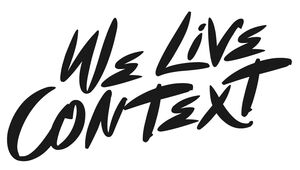Finding the edge
Our industry is all about insight. We occasionally talk about ‘learning’, or ‘knowledge’ and, more often, we talk about ‘understanding’ – this implies something richer, something deeper, but mainly we throw around the word ‘insight’. It’s got those wonderful connotations of profundity and of an awareness of something that no one else yet knows… but again, I’m not sure the word truly sums up what we are looking for.
I believe that by ‘insight’, we really mean ‘competitive advantage’, because, fundamentally, that’s what matters. It’s why we do market research – we’re all aiming to create brands, products, strategies that win.
The challenge is that when you have supermarkets full of optimised FMCG goods, with hundreds of intelligent client teams and research agencies behind them, it can be hard to find this competitive advantage. As the world changes rapidly, what delivers this advantage can change. Fast. It can be something minute, something almost imperceptible, a detail so small and seemingly insignificant that it’s not worth looking into – unless that detail hits at a moment which is a key touch point for real people in real life.
For me, what we’re looking for here isn’t just insight; it’s competitive advantage, and to get to this, we’re looking for edges.
One of our key clients had a hunch that something wasn’t quite right with their product; it was well loved, it had strong rates of sales, but in a competitive marketplace other brands were looming – and the share of market was gradually slipping away. Buy why? Years and years of extensive qual, quant, ethnographic and shopper research had taken them to this point, so what was happening?
The challenge was this: the product did not work holistically. Every element was optimised – the 3D pack, the 2D design, the comms, the place at shelf, the colour, viscosity and fragrance – but they were often optimised in isolation. Ways of working and zero-based budgeting meant it hadn’t always been feasible to look at the bigger picture… and that’s where things had gone slightly askew.
People experience products as a whole, so that’s how we need to understand them. We need to see the interplay between the attributes at each point and identify the singular moments that make or break the credibility of a product – and potentially hand the advantage to a competitor.
This is how we arrived at our experience mapping technique. This approach breaks down each attribute into technical detail to understand what each click, texture or fragrance note brings to the mix and what they communicate at each moment in the product lifespan. It’s only when this is in place that we can start to build on solid foundations.
The risk of losing the edge at a moment that matters is sobering; it creates a negative spiral – the performance precedence is set, and the unthinking habit of repurchase can be broken.
So how can you get it right?
- Get the right stakeholders on board: we need to have the right people in the room to drive action. Director-level audiences make things happen, so heads from each core team must be engaged from the start
- Choose the right competitors (share of wallet matters most): a fish finger is a key competitor of pizza: they can meet the same need, serve the same audience, be eaten on the same occasion, but pizza has the edge: it doesn’t need to be turned – it’s more convenient. Choosing the right competition delivers superiority beyond the boundaries of the immediate category: look to wallet share competition for bigger opportunities for brand growth
- Get true consumer touch points: how do they break it down? This teaches us where to focus, time, effort and budget at moments that really matter
- Get the detail: it’s all about precision. This approach becomes a road map for R&D and category development, so we need clear, detailed knowledge as to what ‘superiority’ looks, feels and sounds like
- Take the good with the bad: this is nit-picking. We need to open our minds to hear what we need to hear, not what we want to hear. This is the hardest bit by far.
This process blends implicit and explicit tasks to pick up the edges that may previously have been missed. It’s those edges which can deliver true competitive advantage.
Hannah Rogers is head of new business and client lead at Blue Yonder. She is speaking at the MRS Combining CX | UX | MR – Virtual Summit on Thursday 4th February.

We hope you enjoyed this article.
Research Live is published by MRS.
The Market Research Society (MRS) exists to promote and protect the research sector, showcasing how research delivers impact for businesses and government.
Members of MRS enjoy many benefits including tailoured policy guidance, discounts on training and conferences, and access to member-only content.
For example, there's an archive of winning case studies from over a decade of MRS Awards.
Find out more about the benefits of joining MRS here.











0 Comments